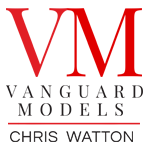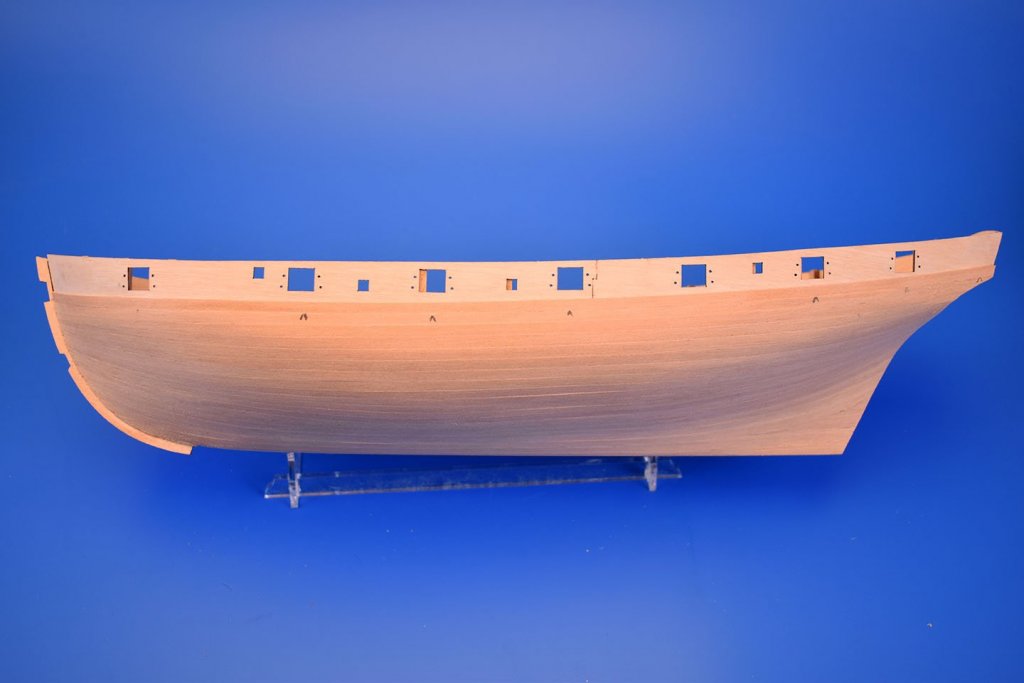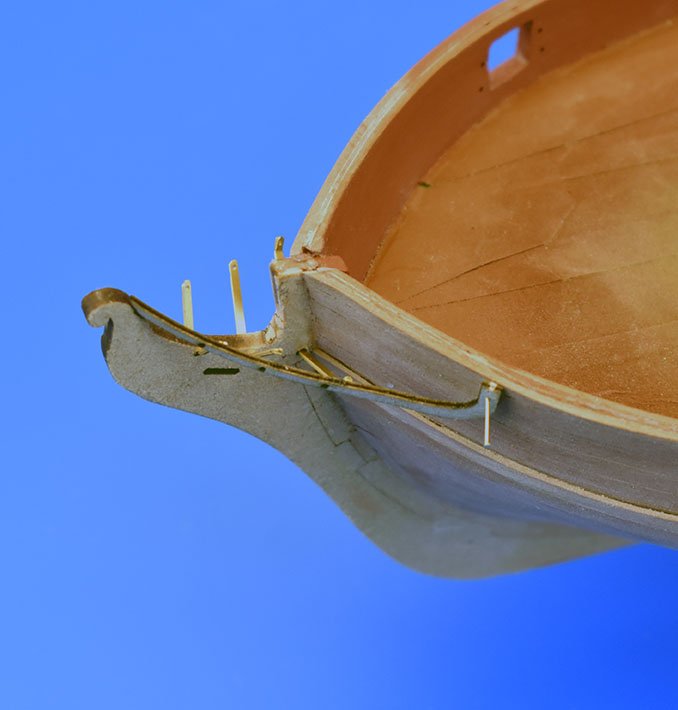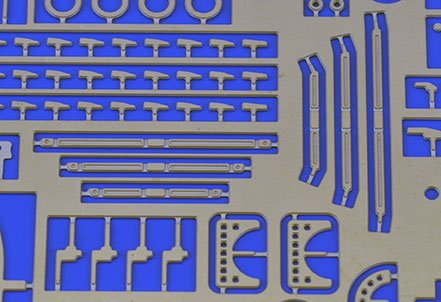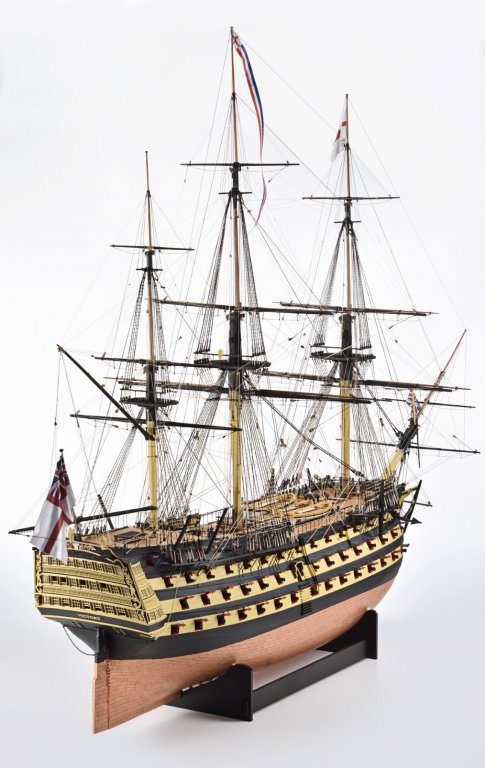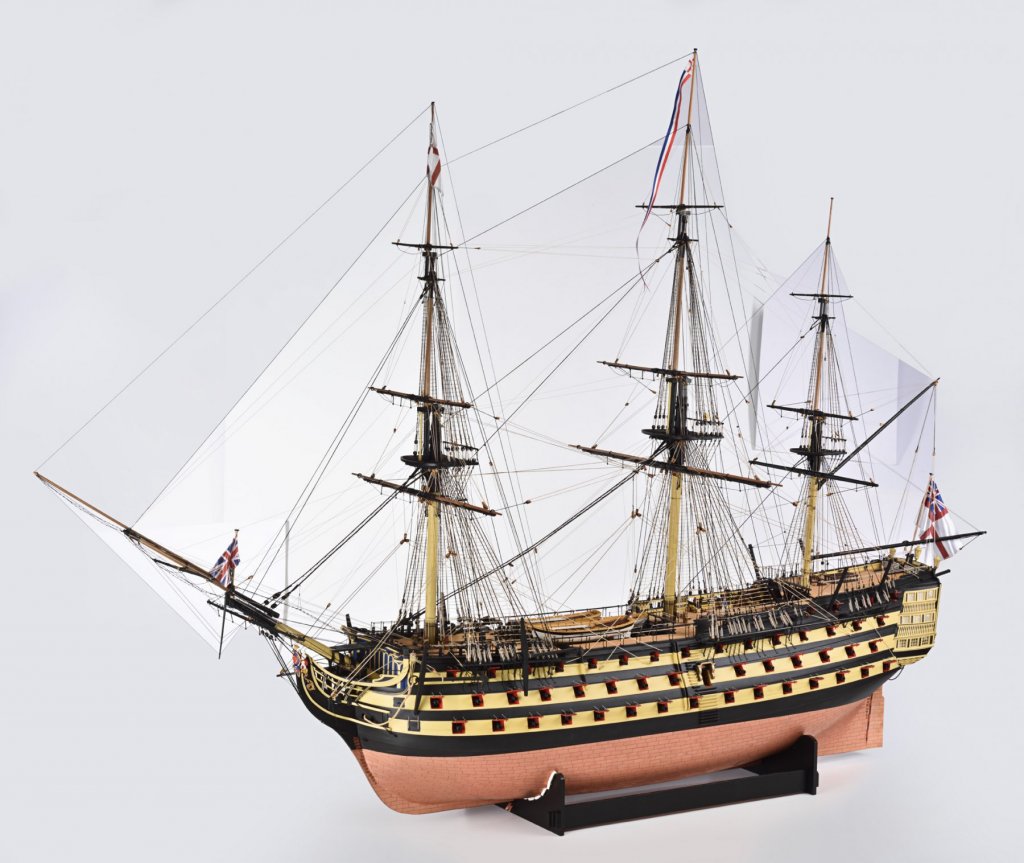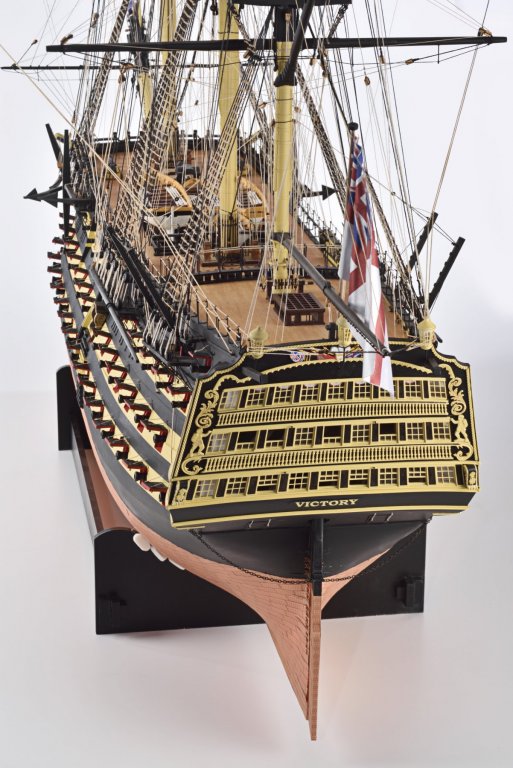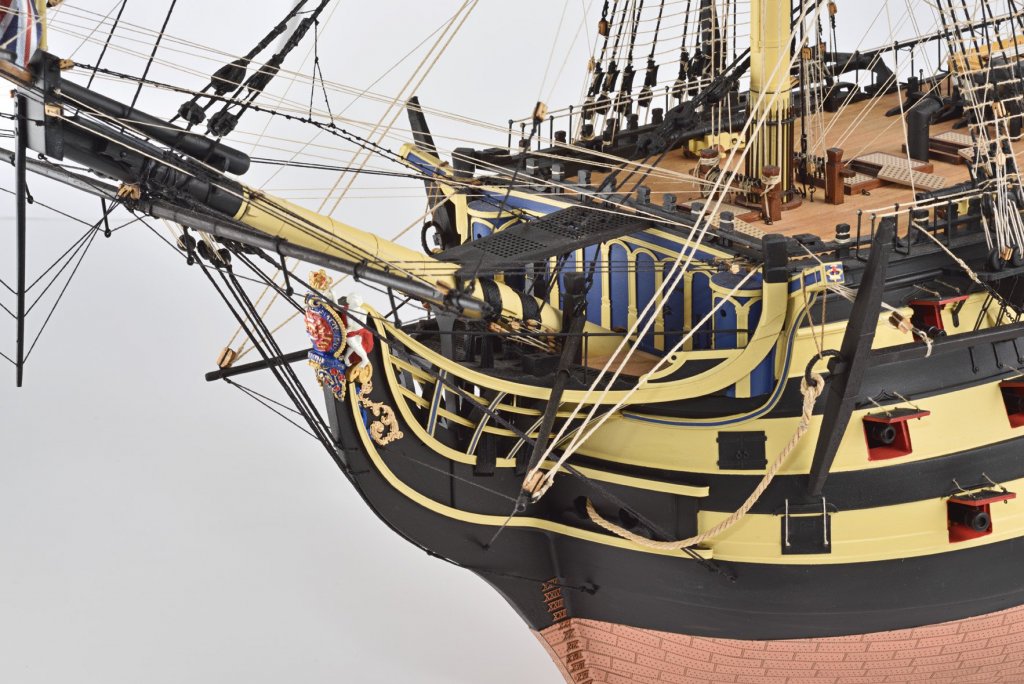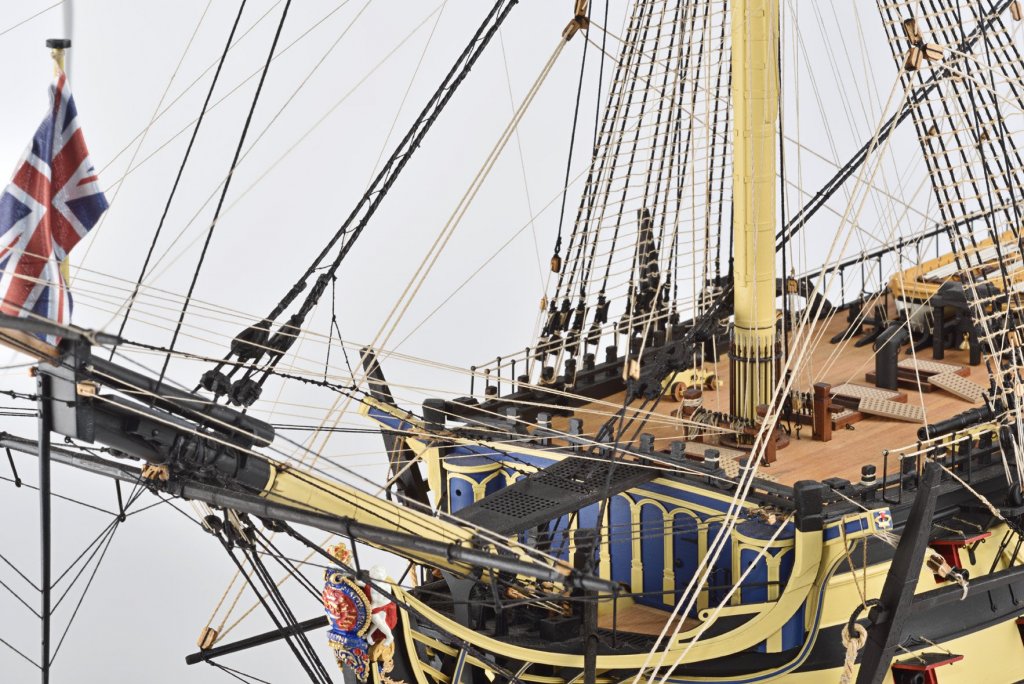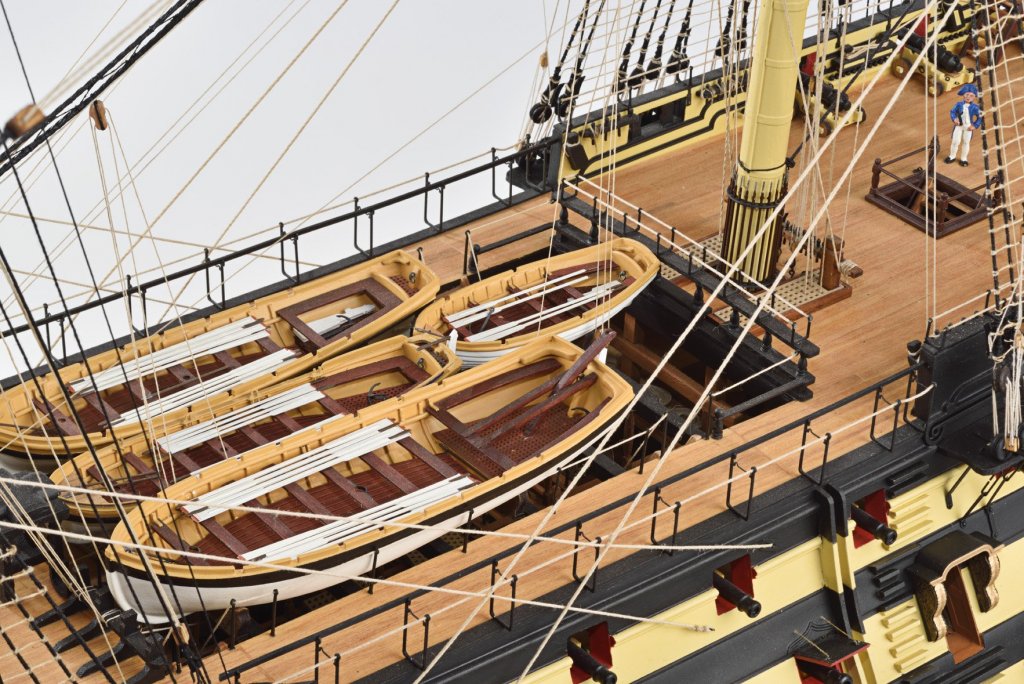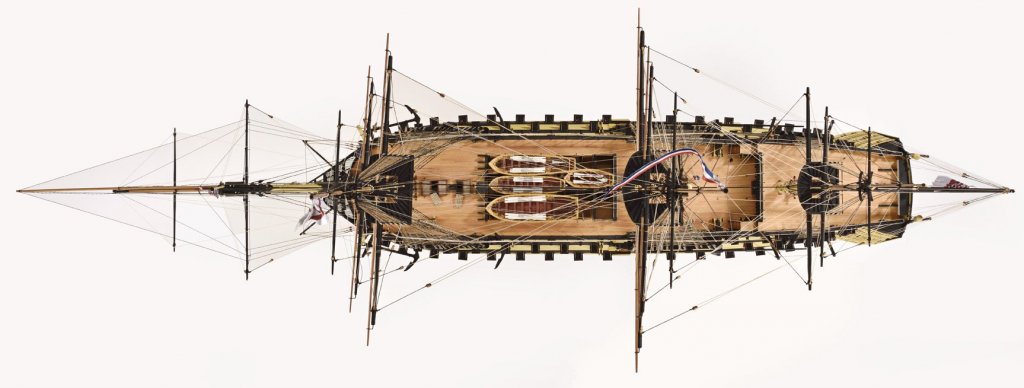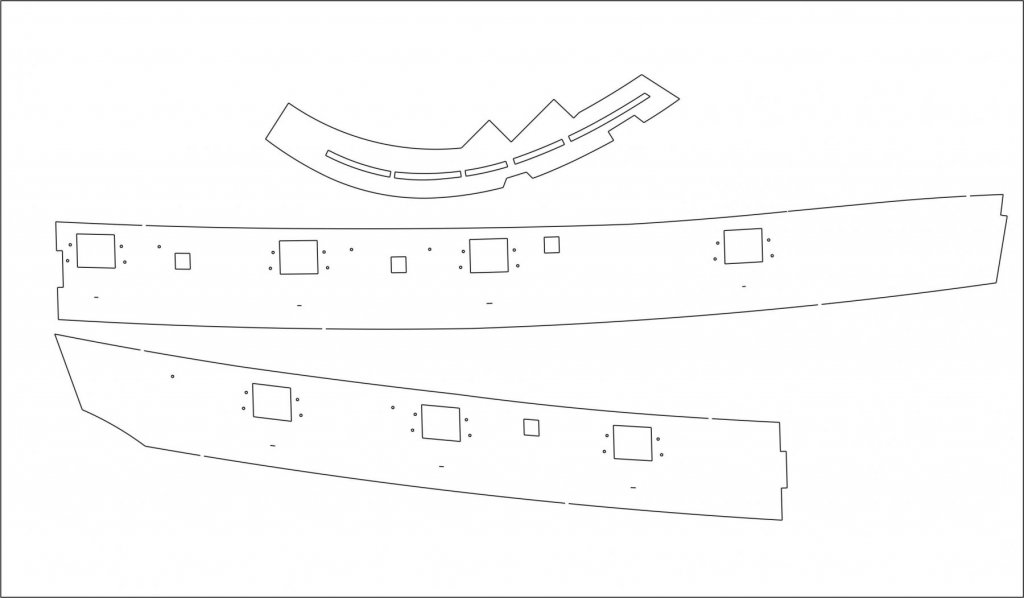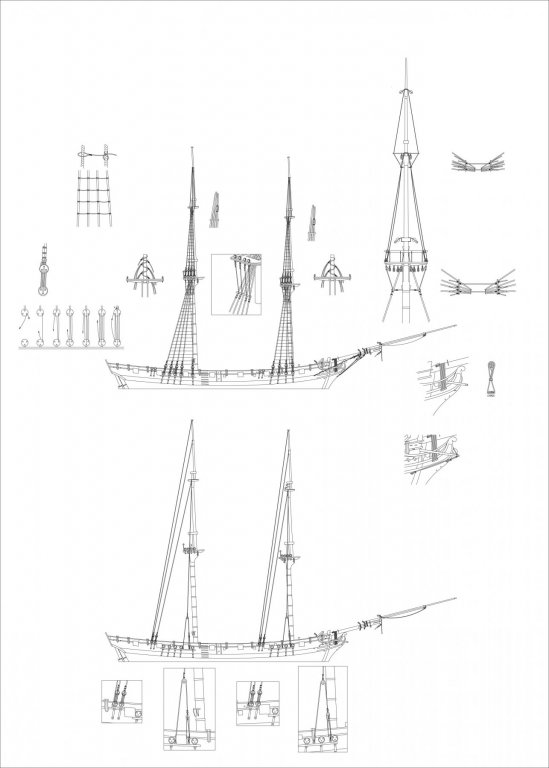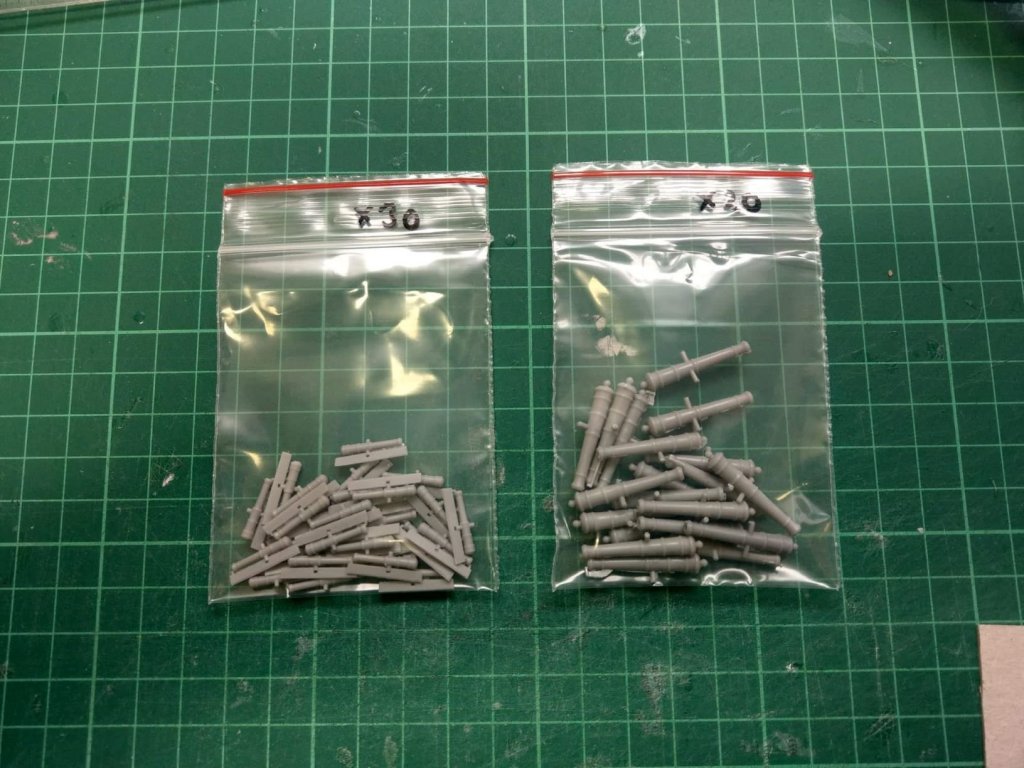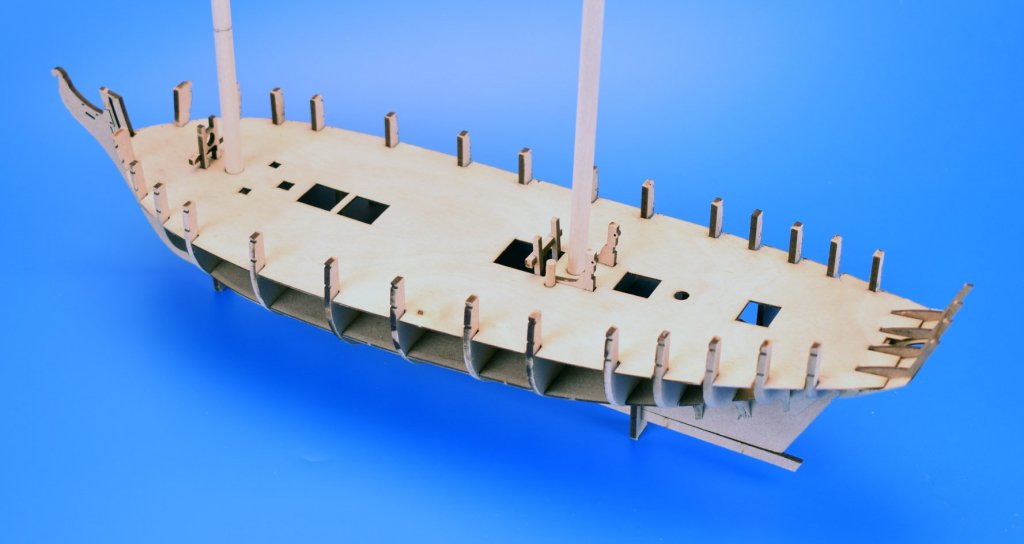-
Posts
2,205 -
Joined
-
Last visited
Content Type
Profiles
Forums
Gallery
Events
Everything posted by chris watton
-
Cheers! I never intended to do another Speedy, but just do this one up to a certain stage, but realised I could not due to the first prototype showing the stern board glued into position after the second planking was complete. So have no choice but to carry on with this one. Perhaps I will finish the other (pear wood) version as Speedy's sister, Flirt. I did think it a mistake to not fix the keel, stern post and prow in place yet, but feel the prow will be vulnerable until all hull planking is finished and sanded - and I cannot add the keel and stern post until the prow is in place. Planking the inner bulwarks next. Using single strips will be tricky, as the stern is closed off so planks need to be perfect in length. A better solution may be to cut the single planks in half and glue one at the front to half way, and measure up and glue the other half from the stern to the end of the front plank. If I were building this for a commission, or for myself as a display model, I may take more time, but I just need to build it to look decent for box art. Plus, I know that if I can build it this quick without much trouble, slap it together, as it were, then almost anyone will be able to build it. I have seen what some of you guys can do, and it's much better than some of my efforts.
-
Fantastic model, very well done, it looks perfect!
- 242 replies
-
- syren
- model shipways
-
(and 1 more)
Tagged with:
-
First planking sanded, ready for second planking. Won't win any prizes for planking perfection, but more than good enough for the basis for second planking, which I will do in Tanganyika for this one. I think the toughest part of the build (for me at least) is trying to sort out the best way of doing the very fine vertical 'V' shaped headrails. They are only 1mm wide according to the original plans, and I hate having to make things like this too thick. With that in mind, I did two separate designs for the 'V' rails in 0.6mm PE (the two sets of long patterns in the PE pic), and in the other pic, I was trying one type last night (nothing glued, just checking everything connected as they should) On the real thing, these 'V' frames must have been nothing more than very 'scanty' timbers connected to the prow and headrail. I would like to keep that delicate look if possible.
-
-
-
Right, Just reinstated the little lines denoting the upper edge of the main wale, and also added the location holes for the inner bulwark cleats on the gun port patterns. Also, added more tabs to the rabbet line on the prow. These are now the kit versions. Also attached is one of the 6 50x70cm sheets for masts (already done), yards and rig, before being imported into Adobe InDesign for text and other stuff..
-
Thanks! regarding a laser machine, I could get out a large loan and get one, along with the workshop space I would need to rent, as I am not sure I would be allowed to have one in my garage with the noise 24/7 in a residential area. Nothing to do with being brave, more to do with economics. I would rather invest my (little) money in stuff like decent materials, resin castings and nice printing. It may surprise you to learn that even some of the largest manufacturers sub contract their laser cut work, and as far as I know, due the chemical process, all photo etched parts are sub contracted. Thank you, although I hesitate to be called expert, I see a lot of stunning work on these forums. OK, this morning (got up very late..), I took off the clamps and pins holding the gun port patterns in place, the basic structure is now more than strong enough to take the planking, with the stern especially being a lot more protected than my first prototype. I think the only way to break any part now would be to drop it from a height onto a hard floor. It has taken a day's work to get to this stage, but perhaps 3 hours work, as most of the time was taken was waiting for the PVA glue to cure. On the last photo, I added a series of small marks under each gun port. I have since deleted these, but I am wondering if I should reinstate them, as they are markers for the curve and height on the main wale, and where the second planking should start. The last pics are from the first prototype, where I just slapped everything together to check that everything aligned as it should and the various openings for bitts and masts were fine. If you look at the stern frames, they come further down the deck than the second prototype, I thought they were too obtrusive, so shortened them as much as I dared without compromised structural integrity. Also, I have the cast resin cannon ready for the prototype model, the 4 pounder and half pounder. The first 50 kits will be this colour, but after this they will be cast in black resin (why didn't I ask for black resin to begin with, dammit)!
-
Cheers! Looking at the nice clear stand, I think it will get scratched/marked too much whilst in the building process. To remedy this, I have just added a slightly simpler cradle to one of the 3mm MDF sheets, so the modeller can use this when building, and then change the stand for the clear acetate version when all done. ETA - Ply gun port patterns have been clamped, pinned and glued in place, so will have to leave it until tomorrow now..
-
I designed the majority before I handed in my notice in late 2001. I had nothing to do with the stern carvings or PE. I left before completing it. I cannot comment on the differences, as there are quite a few years to separate the two, and it would not be cricket to talk about accuracy/detail between the two.
-
You must be close, then, I am in Cinderford!
-
As this is quite a small model, the topmast cross trees would very fragile in wood, even ply once the hole has been laser cut. If it was to be cut in wood, the cross trees would have had to be drawn too over sized. To remedy this, they are now in photo etched brass form, and much stronger to take the topgallant shrouds. There is a problem with the jibboom rest though (left of the picture), which needs to be sorted..
-
Right, just gave the 0.8mm ply gunport patterns a good soak and just clamped one side into position without glue to check fit. Looks fine, less than a mm to tale off at the stern. Once both sides are securely glued in place, the structure should be a pretty solid base on which to start the planking, and due to the amount of bulkheads, the sleek hull form should also be perfectly kept.
-
Thanks. I did actually do something similar with the Amati Fifie model I did a decade ago, but this could be done as the keel was all one part. I did think about making the stem from 3x1mm wood parts, but the variations in thicknesses may be too much over time, plus expecting all modellers to align three almost identical parts up perfectly (full pattern in middle with outer patterns 1.5mm shorter at hull edge) is maybe a big ask. The chances of the part being glued in a position that is slightly off angle are higher, which would be accentuated by the prow pattern when this is glued after planking is complete. I wanted the outer prow to be separate as I know how vulnerable this 3mm thick part can be when planking and sanding - but at the same time, a stable basis for the front planking, which is always a slight issue.
-
Thanks! Just a continuation of where I was heading when designing for Amati. Although I am still unsure about the slot in the stem pattern, I am wondering if it will cause more headache for modellers down the line with complaints about them splitting. The upside of it is the fact the planking at the bow follows the same line as that on the original plans. But I shall see how I get on when adding the ply gun port patterns. I want people to enjoy the building experience, not be frustrated with it. The only things I changed from the first prototype parts are the stern frames and order of fixing the upper stern board/transom, and the addition of a door opening on the 9th bulkhead, in case anyone wants to detail the lower decks.
-
OK, I have put together the basic hull structure, and changed a couple of things since my first build. All of the MDF parts are glued together (superglue gel mostly for a 'speed build'). Everything has gone together fine, no problems. I have changed the stern lower counter and upper stern board. before, the upper pattern was to be added once planked, but I realised just how fragile those stern frames are, more so since I changed them since my first build, to be less unobtrusive. With this in mind, I now show both the stern counter and stern board glued in place as soon as possible, to give the very light and fragile stern area some rigidity. I have also moved these two parts over from the 1mm wood sheet to the 0.8mm plywood sheet, so they have extra strength. The lower decks are the correct height and also have the correct sheers. I will add another two tabs to the stem post to minimise it splitting. I have also attached a pic of my first build, which is in pear, in the process of being sanded after second planking was complete.
-
OK, have took half a night from work, to continue with Speedy. From tomorrow, I shall start adding pictures of the development, and you guys can tell me if you like the way it's going, or if there's anything I should change (within reason, don't ask for all exotic wood parts..) I have already build up one Speedy hull up to the second planking stage, and all was fine. I will now work on this second prototype, which will (hopefully) iron out any little things I may have missed from the first build. I will build this second prototype up to adding the pre-cut gun port patterns, as once that is done, all major structural work is finished, and I shall continue with the first prototype until complete. I may add another two spacer tabs to the stem post, where the planking slots into, based on what I have seen on the Alert build, to ensure there are no problems with this area.
-
Maybe I should have added extra tabs along the slot length like Speedy's (have attached a pic to show that part). What I did do with Alert was to put the front of the planks into the 3mm MDF pattern (parts 11), leaving enough of a slot for the 1mm outer planking. By the time I got to the second planking, the slot was very secure, due to the glue from the first planking.
- 335 replies
-
- alert
- vanguard models
-
(and 1 more)
Tagged with:
-
Sorry to read that, I guess I cannot send another stem post as it is glued in place? If you want another piece, I will happily send another. I did actually build the hull twice, as I do with all new developments, and I was happy with the slot. I had no problems with it on both hulls I tested, and I am intentionally heavy handed when it comes to parts like this. My impression of the limewood, despite my initial reservations, was that the grain was just as good as other decent woods. I did toy with using MDF for the stem and keel parts, but I know that more people than not would have hated that, I do not like using MDF for any parts that are shown when the model is complete.
- 335 replies
-
- alert
- vanguard models
-
(and 1 more)
Tagged with:
-
Just had some of the Speedy prototype parts arrive. A lot more parts than Alert, and 15 bulkheads.. I had one PE sheet missing, so will take a pic of the brass sheets when I receive, but the copper sheets look fine. For the nail heads, I copied exactly a picture I have of an original Victory copper plate. I have tried to make no compromises with this kit, and bought my own supply of 0.8mm ply for the more critical parts. below is not all of the laser sheets, I have the laser engraved deck too. I think I will separate the 1mm wood gunwale into two parts per side, to minimise the chance of it breaking. I have since removed the holes around the rims of the lower tops, as for the period I am basing the model (1800-1802), crowsfeet would not have been rigged. I have even included a few hatchets in the 0.4mm PE, as I know they used these to remove tangled rigging when in battle, and Speedy was in battle a lot!
About us
Modelshipworld - Advancing Ship Modeling through Research
SSL Secured
Your security is important for us so this Website is SSL-Secured
NRG Mailing Address
Nautical Research Guild
237 South Lincoln Street
Westmont IL, 60559-1917
Model Ship World ® and the MSW logo are Registered Trademarks, and belong to the Nautical Research Guild (United States Patent and Trademark Office: No. 6,929,264 & No. 6,929,274, registered Dec. 20, 2022)
Helpful Links
About the NRG
If you enjoy building ship models that are historically accurate as well as beautiful, then The Nautical Research Guild (NRG) is just right for you.
The Guild is a non-profit educational organization whose mission is to “Advance Ship Modeling Through Research”. We provide support to our members in their efforts to raise the quality of their model ships.
The Nautical Research Guild has published our world-renowned quarterly magazine, The Nautical Research Journal, since 1955. The pages of the Journal are full of articles by accomplished ship modelers who show you how they create those exquisite details on their models, and by maritime historians who show you the correct details to build. The Journal is available in both print and digital editions. Go to the NRG web site (www.thenrg.org) to download a complimentary digital copy of the Journal. The NRG also publishes plan sets, books and compilations of back issues of the Journal and the former Ships in Scale and Model Ship Builder magazines.


